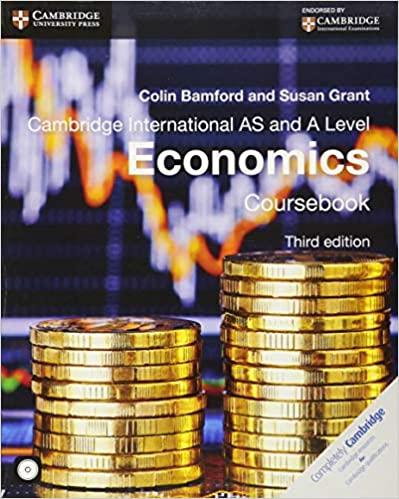Question
Now suppose the money supply model reflects an economy in which, at a given price level, the narrowly defined money supply (M1) in existence is
Now suppose the money supply model reflects an economy in which, at a given price level, the narrowly defined money supply (M1) in existence is $22,550 million, the cash reserve ratio against demand deposits (rD) is 10%, the cash reserve ratio against term deposits (rT) is 3%, the term deposit ratio (t) is 90%, the currency/deposit ratio (c) is 25%, the idle excess reserves/deposit ratios for demand (eD) and term deposits (eT) are equal to 2% and 1% respectively.
If this economy faces serious inflationary pressures and this causes the monetary authorities to implement a monetary and fiscal policy package that results in a decrease in the monetary base by 30% whilst the currency/deposit ratio increases by only 15%, because of an increase in taxes; (a). Other things being equal, calculate the percentage changes in the equilibrium values of M1, M2, C, and (BCRT), and under specified assumptions, illustrate and explain the effects of the total policy package on the equilibrium level of the broad money supply (M2).
Step by Step Solution
There are 3 Steps involved in it
Step: 1

Get Instant Access to Expert-Tailored Solutions
See step-by-step solutions with expert insights and AI powered tools for academic success
Step: 2

Step: 3

Ace Your Homework with AI
Get the answers you need in no time with our AI-driven, step-by-step assistance
Get Started


